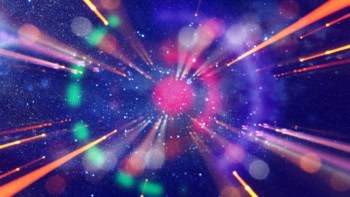Two observations of high-velocity clouds of interstellar gas that move independently of the rotation of the Milky Way have produced conflicting results about their origins. Bart Wakker of the University of Wisconsin in the US and co-workers have estimated that the clouds contain a low percentage of heavy elements, which indicates that they are primordial leftovers from the formation of the galaxy and its neighbours (Nature 402 388). However, Philipp Richter of the University of Bonn in Germany and colleagues have detected molecular hydrogen in a high-velocity cloud near the galactic halo. This suggests the complete opposite - that the clouds are formed from fountains of hot gas caused by exploding supernovae (Nature 402 386).
Astronomers have argued about high-velocity clouds for over thirty-five years. Wakker and colleagues detected ionized sulphur in one such cloud using the Hubble Space Telescope. According to their calculations, the abundance of heavy elements in the cloud is only 9% of that found in the Sun. This, says Wakker, strongly suggests that the clouds replenish galaxies with hydrogen.
The discovery of molecular hydrogen by Richter’s team disputes this argument. Molecular hydrogen is usually created on dust grains composed of heavy elements such as iron. However, these grains could be debris from the nearby Magellanic Clouds – a set of ‘mini’ galaxies orbiting the Milky Way. This implies that the clouds studied by Richter’s team are not typical of high-velocity clouds in general.
The only answer is to make more measurements from other clouds says Robert Braun of the Netherlands Foundation for Research in Astronomy.



